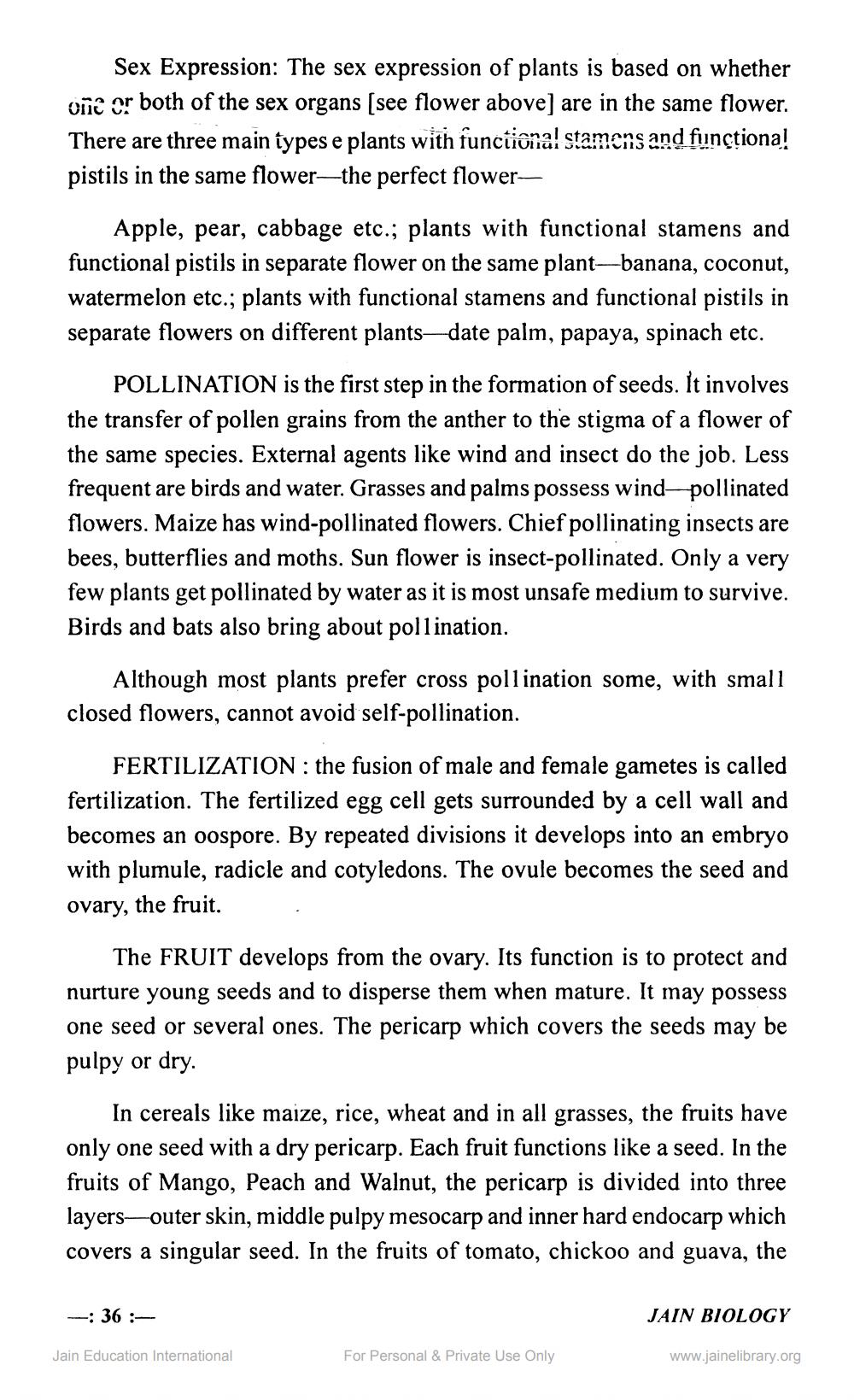________________
Sex Expression: The sex expression of plants is based on whether one or both of the sex organs (see flower above) are in the same flower. There are three main types e plants with functional stamens and functiona! pistils in the same flower—the perfect flower
Apple, pear, cabbage etc.; plants with functional stamens and functional pistils in separate flower on the same plant-banana, coconut, watermelon etc.; plants with functional stamens and functional pistils in separate flowers on different plants—date palm, papaya, spinach etc.
POLLINATION is the first step in the formation of seeds. It involves the transfer of pollen grains from the anther to the stigma of a flower of the same species. External agents like wind and insect do the job. Less frequent are birds and water. Grasses and palms possess wind pollinated flowers. Maize has wind-pollinated flowers. Chief pollinating insects are bees, butterflies and moths. Sun flower is insect-pollinated. Only a very few plants get pollinated by water as it is most unsafe medium to survive. Birds and bats also bring about pollination.
Although most plants prefer cross pollination some, with small closed flowers, cannot avoid self-pollination.
FERTILIZATION : the fusion of male and female gametes is called fertilization. The fertilized egg cell gets surrounded by a cell wall and becomes an oospore. By repeated divisions it develops into an embryo with plumule, radicle and cotyledons. The ovule becomes the seed and ovary, the fruit.
The FRUIT develops from the ovary. Its function is to protect and nurture young seeds and to disperse them when mature. It may possess one seed or several ones. The pericarp which covers the seeds may be pulpy or dry.
In cereals like maize, rice, wheat and in all grasses, the fruits have only one seed with a dry pericarp. Each fruit functions like a seed. In the fruits of Mango, Peach and Walnut, the pericarp is divided into three layers-outer skin, middle pulpy mesocarp and inner hard endocarp which covers a singular seed. In the fruits of tomato, chickoo and guava, the
-: 36 :
JAIN BIOLOGY
Jain Education International
For Personal & Private Use Only
www.jainelibrary.org




